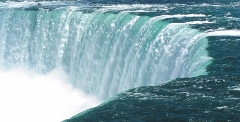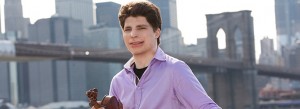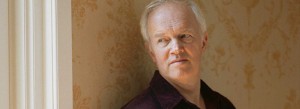EVERYTHING IS NEW AGAIN
It was quite a blow when it was announced that both Christoph Eschenbach and Christian Tetzlaff—due to illness—canceled their engagement with the LA Phil at Disney Hall last weekend. While I wish them both a speedy recovery, their withdrawal resulted in one of the most exciting evenings with the LA Phil I have ever witnessed.
It was more than just exciting when Juilliard-trained violinist Augustin Hadelich performed Beethoven’s Violin Concerto (replacing Tetzlaff’s Schoenberg Violin Concerto); it was a revelation. How is it that this remarkable young man is just now making his Disney Hall debut? (He appeared with the Phil at the Hollywood Bowl.) Grounded yet ethereal, intense yet warm-hearted, jocular yet serious, this 29-year-old played his 1723 Ex-Kiesewetter Stradivarius and took a work I thought I knew, and transformed it from a violinist’s showcase into an intimate and achingly beautiful experience.
With Pacific Symphony last year, Canadian James Ehnes certainly brought technique and soul to the most frequently performed violin concerto in the repertoire, but he did it with panache and tonal coloring. Hadelich, his mouth agape as if receiving pleasure, opted for delicacy and sweetness. Certainly, the technique was there, with crystal clear top notes and precise, incredibly long trills, but his assured romanticism rendered the work so quiet, emotional, and sensitive that it actually roused the spirit. Indeed, the audience burst into sustained applause after the first movement (Allegro) and somehow couldn’t stop. Without ego, Hadelich continually bowed his head in appreciation over and over and over; at one point, I wondered if the patrons thought it was over, but they had simply fallen in love and could not control themselves.
A masterful give-and-take relationship occurred between the Italian-born German and the inimitable Edo de Waart. But instead of standing ¾ toward the Dutch conductor (which was the undoing of Zimmermann playing Dvořák’s Violin Concerto last November), Hadelich faced forward, understanding that his relationship to us is just as important.
There was a bouncy wit during the Larghetto that I have not yet heard, but never once was he showing off; and during the final Rondo, he was never ostentatious yet he was continuously hypnotic. The more tender his playing, the more rapt we became. Perhaps the anecdote about Peggy Lee is true: she supposedly claimed that her signature style developed in noisy nightclubs where she learned that singing low, sensually, and authentically hushed any crowd. For his encore, Hadelich proved he could create a palette of colors by taking us on “The Hunt” with Paganini’s Caprice No. 9 in E major.
Is it possible that Hadelich’s insight was born of adversity? At 15, he was badly burned and nearly died when a fire consumed his family home. Grafts were needed on his face, his abdomen, and his bow arm–yet somehow four critical fingers on his left hand were uninjured. The work it must have taken to recover and become a world-class violinist is incomprehensible. His story is just as inspiring as the glacier-carved mountains of Yosemite.
Having experienced 307 of our National Park units, I have always been awestruck when writers such as Muir and T. Roosevelt can articulate the landscape of America with such lucidity. The same applies to Dvořák and his New World Symphony. The work’s popularity suggests that its evocative beauty is a soul-stirring affair for most listeners, but under de Waart, who allowed LA Phil’s big-gun principals the freedom to truly express themselves, the Ninth became a transcendent experience—exciting as a river-rafting adventure on the Colorado, as glorious as the view of Shenandoah Valley, and as indescribable as Niagara Falls (which the composer visited while writing the monumental work).
Just as Rangers interpret the landscape for us, so too did the LA Phil players elicit the emotion behind the notes. Julien Beaudiment (flute), Ariana Ghez (oboe), Burt Hara (clarinet), Andrew Bain (horn), and Thomas Hooten (trumpet) contributed that magical combination of soul and technique, producing the same healing and uplifting experience caused by bouncing ions near a waterfall. This 40-minute work was haunting, bittersweet, melancholic, homey, spiritual and majestic as nature herself. Let scholars interpret chord structure or tempo, I preferred to lean back and be transported.
Not only did Dvořák interpolate his impressions of the American landscape and music into the Ninth, but he paved the way for the truly American sound from the likes of Aaron Copland and Richard Rodgers, both of whom were born within a decade after its premiere in 1893.
The program opened with Beethoven’s eight-minute Egmont Overture, which was equally sheer perfection. Just as National Park employees are stewards of the land, the magnificent musicians of LA Phil are caretakers of music. If America had her priorities in order, the funding of these institutions would be foremost on the list.
photos courtesy of LA Phil
Los Angeles Philharmonic
Edo de Waart, conductor
Augustin Hadelich, violin
Walt Disney Concert Hall
played January 10-12, 2014
for future events, call 323.850.2000 or visit http://www.laphil.com/



